
Maintaining the water level sensor in your dishwasher is crucial to ensure proper functioning and efficiency of the machine. Over time, debris and mineral deposits can accumulate on the sensor, causing inaccurate readings and potentially affecting the washing performance. This article will guide you through the simple yet essential steps to effectively clean and maintain your dishwasher’s water level sensor, ensuring a sparkling clean and hassle-free dishwashing experience.
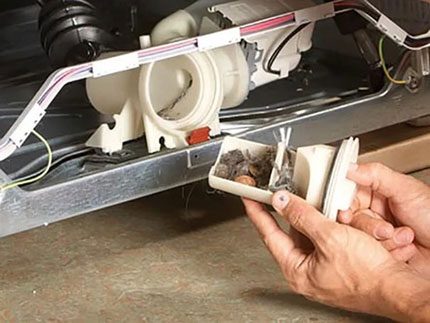
This image is property of engineerx.decorexpro.com.
Inspecting the Water Level Sensor
Understanding the Importance of the Water Level Sensor
The water level sensor in your dishwasher plays a crucial role in ensuring its proper functioning. This small yet essential component is responsible for detecting and regulating the amount of water in the machine. By accurately monitoring the water level, the sensor helps prevent overfilling or underfilling, which can lead to inefficient cleaning or potential damage to both the dishwasher and your dishes. Regular inspection of the water level sensor is necessary to identify any visible damage or corrosion that may affect its performance.
Locating the Water Level Sensor in Your Dishwasher
Before you can inspect or clean the water level sensor, it’s important to know its location within your dishwasher. The sensor is typically situated near the bottom of the appliance, close to the floor. Depending on the model, it may be mounted on the side or at the back of the dishwasher. Consult your dishwasher’s manual or manufacturer’s website for specific instructions on locating the water level sensor in your particular model.
Ensuring Power Supply is Disconnected
Before you begin inspecting or cleaning the water level sensor, it’s crucial to disconnect the power supply to your dishwasher to avoid any potential electric shock. Locate the dishwasher’s power cord and unplug it from the electrical outlet. Alternatively, you can switch off the circuit breaker dedicated to the dishwasher in your electrical panel. Safety should always be your top priority when working with electrical appliances.
Inspecting for Visible Damage or Corrosion
Once you have ensured the power supply is disconnected, carefully examine the water level sensor for any visible signs of damage or corrosion. Inspect the sensor’s housing, wires, and connectors, looking for any cracks, breaks, or rust. These issues can affect the sensor’s performance and reliability. If you notice any damage or corrosion, it may be necessary to clean the sensor or even replace it, depending on the severity of the problem.
Testing the Sensor’s Resistance with a Multimeter
To further assess the functionality of the water level sensor, you can use a multimeter to measure its resistance. Set the multimeter to resistance mode, typically displayed as the omega symbol (Ω). Next, disconnect the wires connected to the water level sensor, being careful not to damage them. Place the probes of the multimeter on the sensor’s terminals and observe the resistance reading. Compare this value to the manufacturer’s specifications to determine if the sensor is within the acceptable range. If the resistance reading deviates significantly, it may indicate a faulty sensor that requires cleaning or replacement.
Cleaning the Water Level Sensor
Gathering the Necessary Tools and Materials
Before cleaning the water level sensor, gather the required tools and materials. You will need a screwdriver, a mild soap or dishwashing detergent, a soft cloth or sponge, and clean water. Ensure that the screwdriver matches the type of screws used to secure the water level sensor cover, as this may vary depending on the dishwasher model.
Removing the Water Level Sensor Cover
Once you have the necessary tools, you can proceed to remove the water level sensor cover. Use the screwdriver to carefully unscrew the screws securing the cover in place. Set aside the screws in a safe place to avoid misplacing them. Gently lift the cover to expose the sensor module beneath.
Removing the Sensor Module from the Dishwasher
With the water level sensor cover removed, you can now detach the sensor module from the dishwasher. Depending on the model, the sensor module may be connected by screws or clips. Refer to your dishwasher’s manual or manufacturer’s instructions to determine the specific method for removing the sensor module. Carefully disconnect any wires or connectors attached to the module, taking note of their positions for reassembly later.
Cleaning the Sensor Module with Mild Soap and Water
Now that the sensor module is detached, it’s time to clean it using mild soap and water. Fill a sink or basin with warm water and add a small amount of mild soap or dishwashing detergent. Gently immerse the sensor module in the soapy water and clean it using a soft cloth or sponge. Pay close attention to any visible dirt, debris, or residue on the module’s surface. Avoid using harsh chemicals or abrasive materials that may damage the sensor.
Removing Accumulated Debris from the Sensor
After cleaning the sensor module, inspect it for any accumulated debris that may have settled on or around the sensor. Carefully remove any debris using a soft cloth or a toothbrush. Take extra care not to damage the sensor or its wiring while performing this step. Clearing away debris ensures optimal functionality of the water level sensor and prevents potential blockages that could interfere with its performance.
Inspecting and Cleaning the Sensor Wires
Along with the sensor module, it’s important to inspect and clean the sensor wires. These wires serve as the connection between the sensor module and the dishwasher’s control board. Examine the wires for any signs of wear, damage, or dirt. If necessary, use a soft cloth or toothbrush to gently clean the wires and remove any dirt or residue. Be careful not to pull or bend the wires excessively, as this may lead to further damage.
Reassembling and Reinstalling the Sensor Module
After cleaning the sensor module and wires, reassemble the sensor module by reconnecting any wires or connectors according to their original positions. Carefully secure the module back into place using screws or clips, as outlined in your dishwasher’s manual. Return the water level sensor cover and fasten it securely using the screws you removed earlier. Ensure that all connections are tight, and the sensor module is properly installed before moving on to the next step.
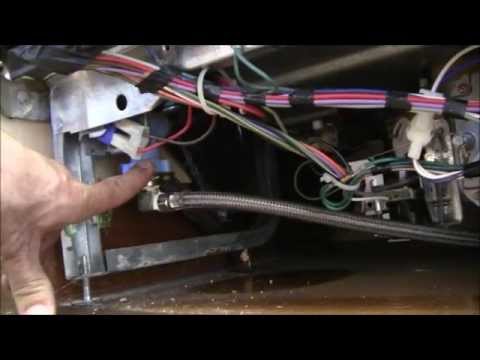
This image is property of i.ytimg.com.
Calibrating the Water Level Sensor
Understanding the Need for Calibration
Calibrating the water level sensor is an essential step in maintaining the optimal performance of your dishwasher. Due to factors like water pressure and variations in water hardness, recalibrating the sensor periodically helps ensure accurate detection of the water level. Calibration aligns the sensor with the desired water levels, allowing the dishwasher to function at its best and provide efficient cleaning results.
Accessing the Calibration Mode on Your Dishwasher
To calibrate the water level sensor, you need to access the calibration mode on your dishwasher. The process can vary depending on the brand and model of your dishwasher. Most dishwashers have a specific combination of buttons that need to be pressed in a particular sequence to enter the calibration mode. Consult your dishwasher’s manual or manufacturer’s instructions to determine the correct method for accessing the calibration mode on your specific model.
Following the Dishwasher Manufacturer’s Instructions
Once you have successfully entered the calibration mode, carefully follow the instructions provided by the dishwasher manufacturer. These instructions may be displayed on the dishwasher’s control panel or provided in the manual. Typically, the process involves specific button presses or knob turns to adjust the water level sensor settings. Pay close attention to the prompts and take your time to ensure accurate calibration.
Adjusting the Water Level Sensor as Directed
During the calibration process, the dishwasher will guide you through adjusting the water level sensor. This adjustment may involve raising or lowering the water level setting to match the optimal level for your dishwasher. Follow the instructions carefully to avoid overfilling or underfilling the dishwasher. Take note of any specific indicators or signals provided by the dishwasher’s control panel to determine the correct adjustment.
Performing a Test Cycle to Verify Calibration
Once you have adjusted the water level sensor settings as directed, it’s important to perform a test cycle to verify the calibration. Select a suitable cycle on your dishwasher, such as a quick wash or a light load, and let the dishwasher run through the entire cycle. Observe the water level during the cycle to ensure the sensor accurately detects and maintains the desired level. If the test cycle completes without any issues and the water level is appropriate, the calibration was successful. However, if any problems arise, refer to the troubleshooting section or consider seeking professional assistance.
Troubleshooting and Resolving Common Issues
Identifying Symptoms of a Malfunctioning Water Level Sensor
Despite regular maintenance and calibration, issues may still arise with the water level sensor in your dishwasher. It’s essential to be aware of the symptoms that indicate a malfunctioning sensor. Common signs of a faulty water level sensor include inconsistent water levels during the dishwasher cycle, persistent overfilling or underfilling, error codes or warnings displayed on the control panel, and incomplete or unsatisfactory cleaning results. If you notice any of these symptoms, it’s time to troubleshoot the water level sensor.
Checking for Clogs or Blockages in the Water Level Sensor
One possible cause of a malfunctioning water level sensor is the presence of clogs or blockages. Over time, debris, food particles, or mineral deposits can accumulate in the sensor or its associated components, hindering its proper functioning. Inspect the sensor module, its housing, and the surrounding area for any signs of clogs or blockages. Clear away any debris using a soft cloth, toothbrush, or compressed air. Ensure that all passages or openings in the sensor are free from obstructions.
Verifying the Sensor’s Wiring Connections
Another potential cause of a malfunctioning water level sensor is loose, damaged, or disconnected wiring connections. Carefully inspect the sensor’s wires, connectors, and terminals for any signs of wear or disconnection. Secure any loose or disconnected connections and ensure they are properly seated. If you spot any damaged wires, consider replacing them to restore proper functionality. Clean the connectors and terminals using a soft cloth or a brush to remove any dirt or corrosion that may interfere with the electrical connection.
Testing and Replacing a Faulty Water Level Sensor
If you have inspected the sensor for clogs, checked the wiring connections, and still experience issues with your dishwasher’s water levels, it may be necessary to test the sensor’s functionality or replace it if it’s found to be faulty. Using a multimeter, measure the resistance of the sensor’s terminals following the steps outlined earlier in this article. Compare the resistance reading to the manufacturer’s specifications. If the resistance reading is significantly outside the acceptable range, it indicates a faulty sensor that needs to be replaced.
Consulting the Dishwasher’s User Manual or Manufacturer
When troubleshooting and resolving issues with the water level sensor or any other component of your dishwasher, always consult the user manual or contact the dishwasher manufacturer for guidance. The user manual provides valuable information specific to your dishwasher model, including troubleshooting tips, maintenance recommendations, and contact details for customer support. Reach out to the manufacturer if you require further assistance or if a replacement water level sensor is needed.
Seeking Professional Assistance if Necessary
While many dishwasher maintenance and troubleshooting tasks can be successfully completed by the average homeowner, there may be instances where professional assistance is necessary. If you feel unsure or uncomfortable with any aspect of repairing or replacing the water level sensor, it’s best to seek the services of a qualified technician. Professional assistance ensures the safe and accurate resolution of complex issues, minimizing the risk of further damage to your dishwasher or personal injury.
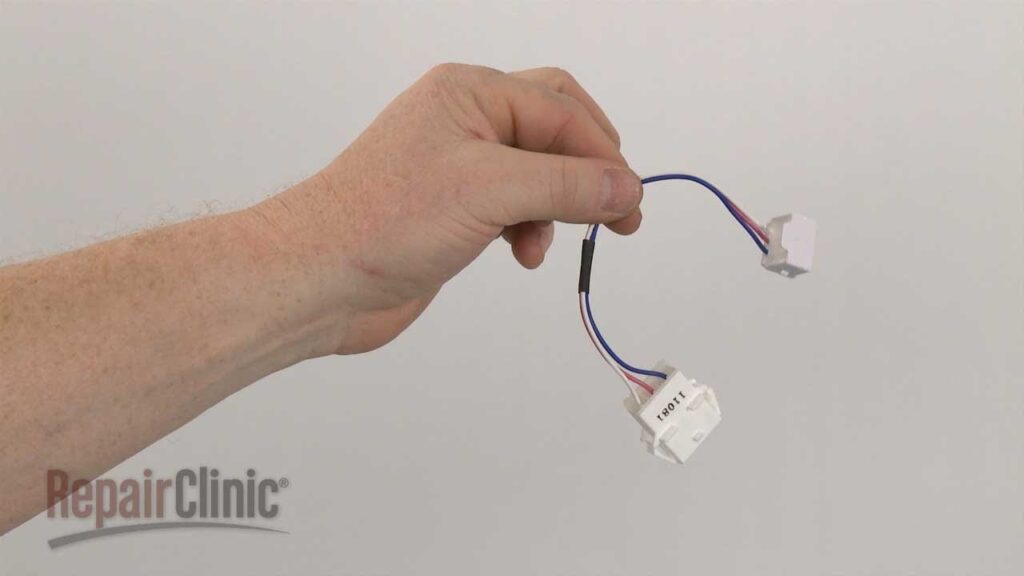
This image is property of i.ytimg.com.
Preventive Maintenance Tips
Checking and Cleaning the Dishwasher’s Filters Regularly
In addition to maintaining the water level sensor, there are several preventive maintenance tips you can follow to keep your dishwasher in optimal condition. One essential task is to check and clean the dishwasher’s filters regularly. Filters help trap food particles and debris, preventing them from clogging the water spray arms and other components. Refer to your dishwasher’s manual for instructions on locating and removing the filters. Rinse them under running water to remove accumulated debris, and gently scrub with a soft brush if necessary. Regularly cleaning the filters promotes efficient cleaning and prevents blockages.
Running Hot Water before Starting the Dishwasher
Before starting a dishwasher cycle, run the kitchen sink’s hot water tap for a few minutes. This practice ensures that hot water is readily available for the dishwasher, enhancing its cleaning power. It also helps prevent the dishwasher from utilizing excessive energy to heat up cold water, improving energy efficiency. Running hot water before starting the dishwasher is a simple yet effective way to optimize the cleaning performance and longevity of your appliance.
Using High-Quality Detergent and Rinse Aid Products
Choosing high-quality dishwasher detergent and rinse aid products is essential for achieving optimal cleaning results and maintaining your dishwasher’s performance. Look for detergents specifically formulated for dishwashers and avoid using regular dish soap, as it may create excessive suds and damage your dishwasher. Follow the manufacturer’s instructions on the detergent packaging for the correct amount to use per load. Additionally, utilizing a rinse aid helps prevent water spots and enhances drying, leaving your dishes sparkling clean.
Avoiding Overloading the Dishwasher
While it can be tempting to fit as many dishes as possible into a dishwasher load, overloading the appliance can hinder its performance and compromise cleaning results. Overcrowding the dishwasher prevents water and detergent from properly circulating, leading to unsatisfactory cleaning and potential damage to dishes. Follow the dishwasher’s loading guidelines, leaving enough space between dishes for optimal water flow. By avoiding overloading, you can ensure thorough cleaning and prolong the lifespan of your dishwasher.
Keeping the Dishwasher and Sensor Area Dry
To maintain the water level sensor and the overall condition of your dishwasher, it’s important to keep the appliance and its surrounding area dry. Wipe down the interior of the dishwasher after each cycle to remove any moisture or residue. Pay extra attention to the area around the water level sensor, ensuring it remains clean and free from water accumulation. Keeping the dishwasher and sensor area dry helps prevent the growth of mold or mildew and reduces the risk of damage caused by water infiltration.
Scheduling Professional Maintenance on a Regular Basis
While regular cleaning and maintenance performed by the homeowner are essential, it’s also beneficial to schedule professional maintenance for your dishwasher on a regular basis. A qualified technician can inspect and service the dishwasher, including its water level sensor, to ensure everything is in proper working order. Professional maintenance helps identify and address any underlying issues before they escalate. This proactive approach helps extend the lifespan of your dishwasher and reduces the need for costly repairs or replacements in the future.
Importance of Maintaining the Water Level Sensor
Ensuring Optimal Performance of Your Dishwasher
Maintaining the water level sensor is crucial for ensuring the optimal performance of your dishwasher. The sensor’s accurate detection and regulation of the water level are essential for efficient cleaning, preventing underfilling or overfilling that could compromise cleaning results. By reliable detection and adjustment, the sensor ensures that the correct amount of water is used for each cycle, resulting in sparkling clean dishes.
Preventing Water Leaks and Potential Water Damage
A properly maintained water level sensor is vital for preventing water leaks and potential water damage. If the sensor fails to detect an overfilled dishwasher, it may result in water overflowing and leaking onto your kitchen floor. This can lead to costly repairs, water damage restoration, and potential hazards, such as slippery surfaces or mold growth. Regular inspection, cleaning, and calibration of the water level sensor help mitigate the risk of water leaks, keeping your kitchen safe and dry.
Enhancing Energy Efficiency and Saving on Utility Bills
By maintaining the water level sensor, you contribute to the overall energy efficiency of your dishwasher. An accurately calibrated sensor ensures that the dishwasher uses the appropriate amount of water for each cycle, preventing excessive water consumption. Using less water not only saves natural resources but also reduces your utility bills. Properly maintaining the water level sensor is a win-win situation, benefiting both the environment and your wallet.
Extending the Lifespan of Your Dishwasher
A well-maintained water level sensor is a key factor in extending the lifespan of your dishwasher. By regularly inspecting, cleaning, and calibrating the sensor, you minimize the risk of malfunction and improve the overall longevity of the appliance. A dishwasher that operates optimally and experiences fewer issues will serve you well for many years, saving you money that would otherwise be spent on premature replacements.
Reducing the Need for Costly Repairs or Replacements
Neglecting the maintenance of the water level sensor can result in costly repairs or even the need for a complete dishwasher replacement. Over time, a malfunctioning or damaged sensor can lead to more significant problems within the dishwasher’s water level system. By performing regular maintenance on the water level sensor, you can identify and address minor issues before they escalate, potentially saving you from expensive repairs or the need for a new dishwasher.
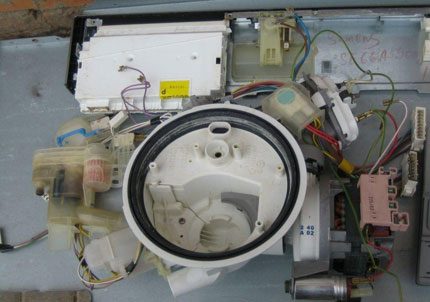
This image is property of engineerx.decorexpro.com.
Understanding the Dishwasher’s Water Level System
Components of the Dishwasher’s Water Level System
To fully comprehend the role of the water level sensor, it’s important to understand the various components of a dishwasher’s water level system. Alongside the water level sensor, key components include the water inlet valve, the float switch, and the drain pump. The water inlet valve controls the flow of water into the dishwasher, while the float switch monitors the water level according to the position of a plastic or metal float. The drain pump, on the other hand, removes excess water during the dishwasher cycle.
Role of the Water Level Sensor in the System
The water level sensor acts as a crucial component within the dishwasher’s water level system. Its main function is to detect and regulate the water level during each cycle. By accurately determining when the desired water level has been reached, the sensor signals the water inlet valve to close, preventing overfilling. The sensor also ensures that the dishwasher has enough water to facilitate effective cleaning. Without the water level sensor’s detection and control, the dishwasher would be unable to operate efficiently.
How the Sensor Determines the Correct Water Level
The water level sensor determines the correct water level by measuring the electrical resistance in the sensor’s circuit. When there is no water present or the water level is below the sensor, the resistance remains high. As water enters the dishwasher and reaches the sensor, the resistance decreases. The sensor relays the resistance reading to the dishwasher’s control panel, which then interprets the data and adjusts the water level as needed. This continuous monitoring and adjustment process ensures the dishwasher maintains the correct water level for optimal cleaning.
Interaction with Other Dishwasher Components
The water level sensor interacts and collaborates with other components in the dishwasher’s water level system to achieve seamless operation. As the sensor detects the water level, it sends signals to the water inlet valve and the dishwasher’s control system. Based on these signals, the water inlet valve adjusts the flow of water into the dishwasher. The float switch also plays a role by providing an additional safety measure to prevent overfilling. This intricate interaction between the water level sensor, water inlet valve, and float switch ensures proper water level management throughout the dishwasher cycle.
An Overview of the Dishwasher’s Water Fill Process
Understanding the water fill process in a dishwasher provides further insight into the significance of the water level sensor. When the dishwasher cycle starts, the control panel triggers the water inlet valve to open. Water flows into the dishwasher through the inlet hose, entering the tub and gradually rising. The water level sensor constantly checks the water level and communicates with the control panel. Once the desired water level is reached, as determined by the sensor, the control panel signals the water inlet valve to close, finalizing the fill process. The dishwashing cycle can then proceed with confidence, ensuring the ideal environment for effective cleaning.
Safety Precautions
Disconnecting Power to the Dishwasher
Safety should always be a top priority when inspecting, cleaning, or performing maintenance on your dishwasher’s water level sensor. Before beginning any work, it’s imperative to disconnect the power supply to the dishwasher. Unplug the dishwasher’s power cord from the electrical outlet, or switch off the dedicated circuit breaker in your electrical panel. This precaution eliminates the risk of electric shock or injury while carrying out necessary tasks.
Wearing Protective Gloves and Eye Gear
To protect yourself during the maintenance process, it’s advisable to wear protective gloves and eye gear. Rubber or latex gloves can shield your hands from chemicals, sharp edges, or electrical components. Safety goggles or glasses provide eye protection from any potential debris or cleaning agents that may be dislodged during the cleaning process. Wearing protective gloves and eye gear reduces the risk of injuries and ensures a safer working environment.
Using Caution when Working with Water and Moisture
While inspecting or cleaning the water level sensor, it’s important to exercise caution when working with water and moisture. Even after disconnecting the power supply, residual water may be present in the dishwasher. Use towels or absorbent materials to dry any moisture or water before proceeding. Avoid direct contact with water or moisture, as it may pose a slip or electrical hazard. Taking necessary precautions helps prevent accidents and ensures a safe maintenance process.
Following Proper Handling and Disposal of Chemicals
If you choose to use mild soap or dishwashing detergent during the cleaning process, it’s important to handle and dispose of these chemicals properly. Read and follow the instructions on the product packaging to ensure safe usage. Avoid mixing different cleaning agents, as this can lead to hazardous chemical reactions. After use, properly seal and store the chemicals in a designated area. If disposal is required, follow local regulations and guidelines to protect the environment.
Reading and Adhering to All Dishwasher Safety Instructions
Throughout every step of cleaning and maintaining your dishwasher’s water level sensor, it’s crucial to read and adhere to all safety instructions provided by the dishwasher’s manufacturer. The user manual contains valuable safety information specific to your dishwasher model. Familiarize yourself with all safety guidelines, warnings, and precautions outlined in the manual. Following these instructions ensures your safety and the effective operation of your dishwasher.
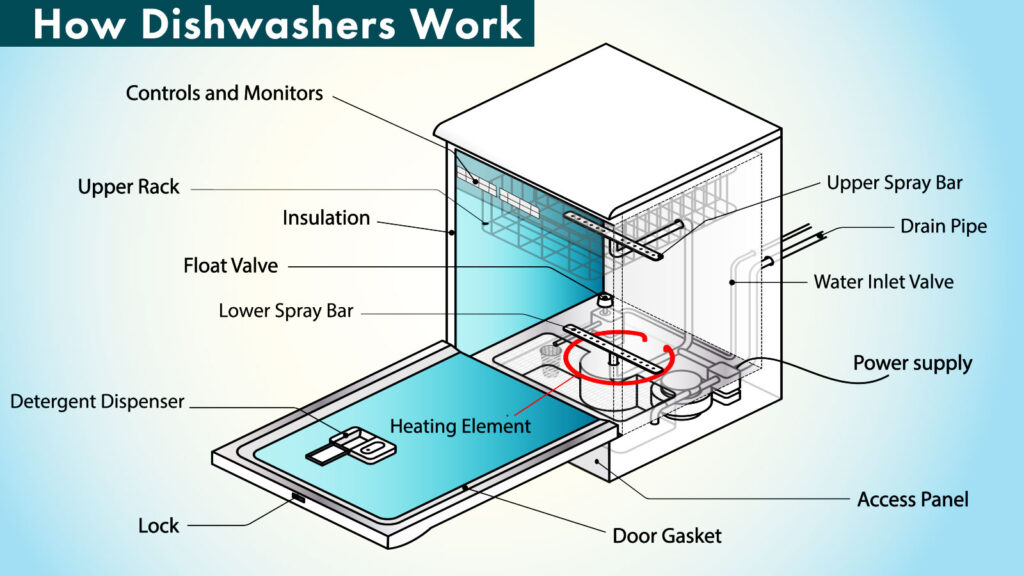
This image is property of cdn.hswstatic.com.
Additional Tips and Recommendations
Keeping a Record of Maintenance and Cleaning
To stay organized and maintain a consistent dishwasher maintenance routine, it’s helpful to keep a record of each cleaning and maintenance task performed. Keep a notebook or digital file where you can record the dates of inspections, cleanings, calibrations, and any repairs or replacements made. This record not only helps you stay on top of maintenance schedules but also serves as a valuable resource for tracking trends, identifying recurring problems, or providing documentation for warranty claims or professional services.
Researching and Learning from User Experiences
Taking advantage of the wealth of knowledge available online can be highly beneficial when it comes to maintaining your dishwasher’s water level sensor. Researching user experiences and reading forums, blogs, or articles dedicated to dishwasher maintenance can provide valuable insights and troubleshooting tips. Learning from others’ experiences can save you time, effort, and potential mistakes, enabling you to achieve better results when cleaning and maintaining your dishwasher’s water level sensor.
Considering Professional Installation of Dishwashers
When purchasing a new dishwasher or relocating an existing one, it’s worth considering professional installation services. Qualified technicians possess the expertise and experience to correctly install and calibrate the dishwasher and its components, including the water level sensor. Professional installation ensures that the dishwasher is set up in accordance with manufacturer specifications and optimizes its performance from the start. Taking advantage of professional installation services sets a solid foundation for proper dishwasher maintenance and longevity.
Exploring Other Troubleshooting Methods and Resources
While this article provides a comprehensive guide to cleaning and maintaining your dishwasher’s water level sensor, several other troubleshooting methods and resources can assist you in resolving any issues that may arise. Online tutorials, manufacturer support forums, or customer support lines can provide additional guidance and insights tailored to specific dishwasher models. Exploring these resources expands your troubleshooting knowledge, empowering you to effectively address any challenges that occur during your dishwasher’s lifespan.
Keeping an Eye on New Features and Technological Advancements
As technology advances, newer dishwasher models may incorporate additional features or advancements that can benefit your overall cleaning experience. Stay informed and keep an eye out for any innovative features related to water level detection and regulation. Manufacturers continually strive to improve the performance and efficiency of their dishwashers, so exploring new features and technological advancements ensures you can make informed decisions about maintenance, upgrades, or future purchases.
Conclusion
Importance of Regular Cleaning and Maintenance
Regular cleaning and maintenance of your dishwasher’s water level sensor is essential for ensuring its optimal performance and longevity. By inspecting, cleaning, and calibrating the sensor, you prevent potential issues such as overfilling, underfilling, or malfunctions, ensuring that your dishwasher consistently cleans your dishes to perfection.
Enjoying the Benefits of a Well-Maintained Water Level Sensor
By dedicating time and effort to maintain your dishwasher’s water level sensor, you enjoy numerous benefits. These include efficient cleaning results, prevention of water leaks and potential damage, enhanced energy efficiency for cost savings, and an extended lifespan of your dishwasher. A well-maintained water level sensor contributes to the overall satisfaction and enjoyment of using your dishwasher.
Taking Pride in Your Dishwasher’s Performance and Longevity
By implementing the comprehensive cleaning and maintenance routine outlined in this article, you can take pride in the performance and longevity of your dishwasher. Knowing that you have taken proactive steps to care for your appliance provides peace of mind and allows you to confidently rely on its efficient operation. Regular maintenance not only prolongs the lifespan of your dishwasher but also enhances your overall experience in the kitchen. By investing time and effort in maintaining your dishwasher’s water level sensor, you ensure a long-lasting and reliable cleaning companion.





